|
Brought to you by Dairy's Professional Development Organization®
|
|
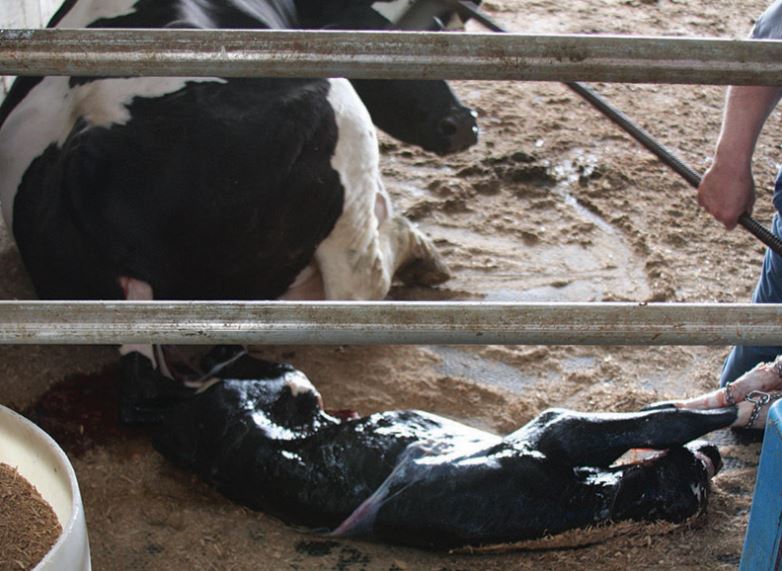 THE DELIVERING COW AND THE NEWBORN CALF THE DELIVERING COW AND THE NEWBORN CALF will be the focus of a one-day hands-on workshop, and it'll be taught exclusively in Spanish. The Dairy Obstetrics and Newborn Calf Workshop will be offered at two locations: Thursday, September 22 in Colby, Wis. and Friday, September 23, in Greenleaf, Wis. Oscar Duarte, DVM, will lead a session entitled "The Delivering Cow" and provide tips to ensure first-rate maternity care. During the "For the Newborn Calf" session dairy specialist Jorge Delgado will teach students to work with refractometers, serum samples and colostrum samples. Both hands-on sessions will help attendees grasp the "why" and "how" of efficient and appropriate protocols to implement during standard and more urgent delivering-cow and newborn-calf situations. The program will begin at 9 a.m. and conclude by 4 p.m. and it'll take your Spanish-speaking workers to a new level. Register online or call PDPW at 800-947-7379. To learn more
click here.
 SECURE YOUR SPOT SECURE YOUR SPOT for the upcoming two-part World Class Webinars series: "U.S. and World Impact of 2016's Crops & Markets," with economist Dan Basse. Explore price trends and gather insights from Basse's experiences in the commodity business as he focuses on agriculture numbers, trends and forecasts. Glean insight on how the most recent growing season is impacting domestic and global supplies and learn about trends and projections for the year ahead in forage, corn and protein prices. This is the first of a two-part webinar series and will be presented live on Wednesday, Sept. 21, between noon and 1:00 p.m. CDT.
Click here to learn more about the webinar. Register online or call the PDPW office at 800-947-7379.
|
For your dairy...
 RECENT FINDINGS REGARDING RUNOFF IN AG LAND AND NON-AG LAND
shed light on a few key similarities and differences. Research conducted by UW Discovery Farms in which they monitored one city site and two non-cultivated areas shows that: 1) runoff occurs at similar times during the year at agricultural and non-cultivated sites; 2) overall, the city site had more runoff than the ag or non-cultivated areas; 3) the city and ag sites were very similar in annual loss of sediment, phosphorus and nitrogen; 4) consistency of runoff is related to the type of land use. Since the use of ag land is more variable than the use of city land due to crop rotation and fertilizer or manure management, the losses in soil, phosphorus and nitrogen were typically higher at the ag site, particularly during the non-frozen-ground period. Discovery Farm's report, which includes graphs for soil, phosphorus and nitrogen loss, is available online at
this website
. RECENT FINDINGS REGARDING RUNOFF IN AG LAND AND NON-AG LAND
shed light on a few key similarities and differences. Research conducted by UW Discovery Farms in which they monitored one city site and two non-cultivated areas shows that: 1) runoff occurs at similar times during the year at agricultural and non-cultivated sites; 2) overall, the city site had more runoff than the ag or non-cultivated areas; 3) the city and ag sites were very similar in annual loss of sediment, phosphorus and nitrogen; 4) consistency of runoff is related to the type of land use. Since the use of ag land is more variable than the use of city land due to crop rotation and fertilizer or manure management, the losses in soil, phosphorus and nitrogen were typically higher at the ag site, particularly during the non-frozen-ground period. Discovery Farm's report, which includes graphs for soil, phosphorus and nitrogen loss, is available online at
this website
.
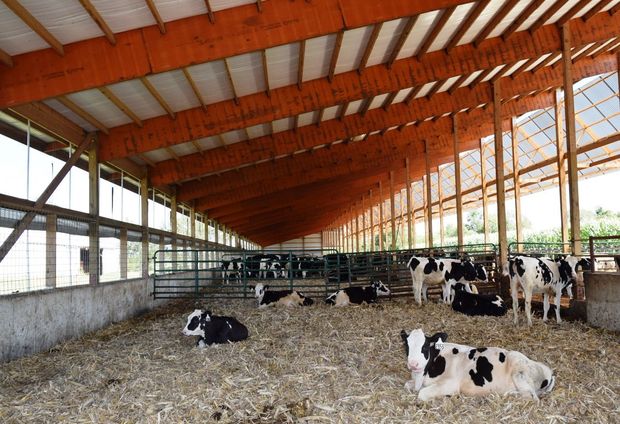 EXPOSE YOUR HEIFERS TO THE MILKING PARLOR PRIOR TO CALVING EXPOSE YOUR HEIFERS TO THE MILKING PARLOR PRIOR TO CALVING on several occasions, and you'll be glad you did, says Ulrike Sorge with the University of Minnesota-Extension. Sorge points out that studies have shown training heifers for the milking parlor visit reduces adverse behavior of heifers at their first milking. "Stress impacts not only the behavior of cattle in the parlor but also decreases the cow flow into the parlor and impairs milk production and quality," Sorge states. "For instance, urine of stressed animals contains alarm substances that warn other cows about a stressful area and will slow cow flow into the parlor even after the stressed animal is gone." Sorge urges dairy farms to find a way to positively interact with their heifers prior to calving including stroking or brushing pre-fresh heifers in their home pen, to reduce the number of new stimuli for heifers going through the milking parlor. "It will positively impact cow flow, milk production and worker safety," he summarizes.
Click here
to learn more.
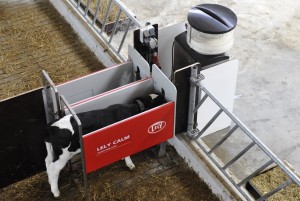 IS AUTOMATED CALF-FEEDING RIGHT FOR YOU?
The percentage of dairy operations in the U.S. housing pre-weaned calves in groups has increased in recent years which has led to a rise in automated calf feeders. Computerized, automated calf feeders make it easier to feed young calves in groups and larger amounts of milk and more frequent meals can be delivered with an automated feeder without additional labor. In addition to other benefits, Dr. Marcia Endres, PhD, DVM, University of Minnesota, cites that similar benefits were found on dairies using automated calf feeders whether they retro-fitted a current facility or constructed a new facility for this purpose. Endres noted that producers still need to be attentive to the cleanliness of the calf-feeding equipment. "It is extremely important to run all the circuit cleaning as recommended by the manufacturer - or more. Replace hoses and nipples regularly, use a good disinfectant such as chlorhexidine to remove biofilms from surfaces, keep the area around the feeder clean, provide clean and dry bedding to the calves, have good quality milk, and calibrate the equipment to deliver appropriate concentration of nutrients and temperature for the milk," she states. Endres adds that good health is achievable when automated calf feeders are used "as long as appropriate management and maintenance are emphasized and implemented."
This link
will take you to more detailed information from Dr. Endres. IS AUTOMATED CALF-FEEDING RIGHT FOR YOU?
The percentage of dairy operations in the U.S. housing pre-weaned calves in groups has increased in recent years which has led to a rise in automated calf feeders. Computerized, automated calf feeders make it easier to feed young calves in groups and larger amounts of milk and more frequent meals can be delivered with an automated feeder without additional labor. In addition to other benefits, Dr. Marcia Endres, PhD, DVM, University of Minnesota, cites that similar benefits were found on dairies using automated calf feeders whether they retro-fitted a current facility or constructed a new facility for this purpose. Endres noted that producers still need to be attentive to the cleanliness of the calf-feeding equipment. "It is extremely important to run all the circuit cleaning as recommended by the manufacturer - or more. Replace hoses and nipples regularly, use a good disinfectant such as chlorhexidine to remove biofilms from surfaces, keep the area around the feeder clean, provide clean and dry bedding to the calves, have good quality milk, and calibrate the equipment to deliver appropriate concentration of nutrients and temperature for the milk," she states. Endres adds that good health is achievable when automated calf feeders are used "as long as appropriate management and maintenance are emphasized and implemented."
This link
will take you to more detailed information from Dr. Endres.
|
WHILE 80 PERCENT OF AMERICANS SAY THEY FEEL GUILTY about throwing away food, 51 percent maintain it would be difficult to reduce household food waste. To reduce food waste plus reduce global food insecurity while improving food-purchasing power for the world's poorest people, The Center for Food Integrity cites the need to educate consumers. CFI urges farmers to build support for farming by talking about how the systems they use on the farm today help keep healthy food affordable. "These systems help farmers produce more using fewer resources, which is critical to feed a growing global population." Read about a smartphone app an Ohio State University team is developing to better measure household food waste, share information, and highlight policy efforts that address the food-waste issue at
this website.
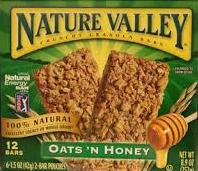
KEEP 'NATURAL' ON FOOD LABELS?
Redefine the FDA's longstanding policy regarding the use of the term 'natural' on food labels? Ban the word 'natural' from food labels altogether? That's a dilemma the U.S. government faces and many national organizations are attempting to influence the government's final decision. Consumers Union, which publishes Consumer Reports, and other organizations including Consumer Federation of America, Food & Water Watch, Friends of the Earth U.S. and the National Organic Coalition want the FDA to consider food production techniques and not just processing methods and ingredients. The Grocery Manufacturers Association supports a three-tiered approach: '100% Natural', 'Natural,' and 'Made with Natural...' You can find out what other organizations are saying, how changes to the definition of 'natural' could be significant for the healthy-foods industry and why the FDA doesn't have sole jurisdiction over what is and isn't 'natural' at
this site
.
 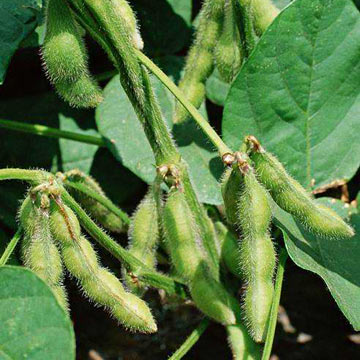 BIOENGINEERED SEED BIOENGINEERED SEED accounted for 94% of U.S. soybean acreage, 93% of cotton acreage and 92% of corn acreage, according to a report released by the Economic Research Service of the USDA. Bioengineered corn acreage was comprised of 3% insect-resistant only, 13% herbicide-tolerant only and 76% "stacked" traits. Cotton acreage include 4% insect-resistant, 9% herbicide-tolerant and 80% "stacked" traits. Soybean acreage was herbicide-tolerant only. Other bioengineered crops planted in the United States include sugar beets, canola, alfalfa, papaya, squash and potatoes. The United States has more acres planted to bioengineered crops than any other country, accounting for 39% of the global total. Between 1994 and November 15, 2015, approximately 40 countries have granted regulatory approvals to bioengineered crops for use as food and/or feed.
Check out why the ERS says "U.S. farmers 'universally' adopt bioengineered seed" and read this
article to learn more.
|
For your business mind...
 WHEN STRESSORS EXCEED CURRENT COPING ABILITIES WHEN STRESSORS EXCEED CURRENT COPING ABILITIES it's time to act. Whether it's you who is reaching your limits or a spouse, a friend or a relative, the 'who' doesn't matter. What matters is that someone notices the warning signs for suicide and urges the individual to seek treatment. Warning signs include talking about feeling trapped or having no reason to live, increased use of alcohol or drugs, acting recklessly, withdrawing from activities, sleeping too much or too little and displaying depression, rage, loss of interest, humiliation, irritability or anxiety. "Most people who take their lives exhibit one or more warning signs, either through what they say or what they do," notes the American Foundation for Suicide Prevention. Why talk about suicide? Simple: In the United States, the rate of farmer suicides is just under two times that of the general population.
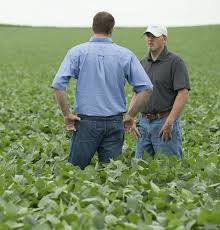 GREAT LEADERS AREN'T AFRAID TO ASK TOUGH QUESTIONS GREAT LEADERS AREN'T AFRAID TO ASK TOUGH QUESTIONS of themselves and others. A
High Performance blog posted July 27, 2016, points out that great leaders "know the value of openness with their teams and that asking the right question will elicit a positive response and reveal impediments to company growth." These same leaders also know the value of looking forward and not backward to past achievements. The blog notes that the best leaders always ask five simple questions:
1) What do you think?
2) How can I do better?
3) What is your biggest problem and how can I solve it?
4) What do we need to fix? ...or What is our biggest problem?
5) What have I learned today?
More on this, plus "7 Words or Phrases to Motivate Your Employees" and "15 Ways to be a Bad Leader" can be found at
this blogsite.
THERE ARE THINGS CHILDREN SIMPLY SHOULD NOT DO around the farm because they aren't old enough for the tasks. Per the Cultivate Safety web site, children ages 10-12 can feed milk to calves but they should not work with large animals, operate tractors or machinery or be an extra rider on a tractor. Children ages 13-15 can clean calf pens and hutches, repair fences, run pressure washers and operate farmstead equipment, but they shouldn't operate tractors on public roads, handle farm chemicals, work with bulls, be an extra rider on a tractor or work in grain bins, silos or manure storage facilities. Cultivate Safety's list for what children 16-17 years of age should not do includes work with bulls, pull oversize or overweight loads, hitch a tractor to move stuck or immovable objects, be responsible for supervising other young workers, apply pesticides and/or anhydrous ammonia, be an extra rider on a tractor or work in grain bins, silos or manure storage facilities. Check out what parents and adults should do regarding children of each age at
this website.
WORDS TO LIVE BY. . .
"Progress is more important than perfection" -- Simon Sinek
|
Meet a fellow PDPW member...
|
|
 |
Garrett, Troy & Sandy Madland
|
 |
Troy and Sandy Madland, Lyndell Dairy, Lyndon Station, Wis, are first-generation dairy producers who began their dairying profession in 1994. They started small, and they credit specific individuals and PDPW for helping them to learn the ropes and grow their herd, knowledge base and management skills.
Operating with a double-10-herringbone parlor that Sandy describes as "no-frills," Lyndell Dairy currently milks 390 cows three times a day.
"Our one extravagance is the automatic take-off arms which makes it easier for the milkers," she says. "We were getting over-crowded in our old parlor. Since milking in here as of November of 2015, our worker morale is better and the cows like it too. And, our cell count is always under 100,000 since moving into this parlor."
With 1,800 acres to farm, Troy concentrates on the field work with help from a couple of employees. The couple's son Garrett is the dairy's herdsman, and he and their assistant herdsman milk a couple of shifts a week to help keep the lines of communication open between them and their milkers. The dairy also raises bull calves to 600 pounds and sells them as feeders, and heifers are housed on neighboring farms.
Living near Wisconsin Dells campgrounds, vacation homes and shopping malls, the Madlands are dedicated to keeping rural and non-rural relationships healthy. They have hosted fourth graders from the Wisconsin Dells school districts, given scheduled - and even a few unscheduled - tours and enjoy interacting with community leaders. Sandy views PDPW's ACE (Agricultural Community Engagement) twilight meetings as excellent public-relations opportunities to gather town and county officials, neighbors and farmers together.
Troy, Sandy and Garrett are emphatic about lifelong learning and networking.
"Networking is a big deal," Sandy says. "Ag is a small circle, and farmers are busy... PDPW brings people together."
Sandy acknowledges that it takes some effort attending in-state and out-of-state PDPW-sponsored conferences and seminars, but she, Troy and Garrett agree that the effort is worthwhile.
"It would be easy to just stay at home and work every day," she states. "We need to make the effort and look at these conferences as working vacations.
"PDPW is an awesome organization. It's helped us a lot. We are first-generation farmers and don't have mom and dad on the farm to teach us. We need the resources PDPW provides."
|
|
A BIG Thank You...
TO OUR PDPW SPONSORS who
support continuous improvement for the dairy industr
y.
T
hey believe in producer leadership and place a high value on lifelong
education for those involved in the dairy industry. We deeply respect their commitment to PDPW and the members we have the honor to serve. It is by this partnership that we c
ontinu
e to build a strong industry filled with capable professionals. Click
HERE
to see a list of our sponsors. If you interact with any of these companies, please thank them for supporting PDPW!
If you or a company you know is interested in participating as a sponsor, please contact one of our team members at [email protected] or call 800-947-7379.
|
|
PDPW Education Calendar
|
September 21
|
World Class Webinar "2017 Commmodity Crop Trends
", Dan Basse: Online
, noon CDT
|
| September 22 & 23 |
Dairy Obstetrics and Newborn Calf Care Workshop (Taught in Spanish): Colby and Greenleaf, Wis.
|
|
October 12
|
World Class Webinar "Global Markets - The Impact", Dan Basse: Online, noon CDT
|
| October 18, 19 & 20 |
Calf Care Connection Workshops: Appleton, Madison and Warrens,Wis.
|
| October 25-26 |
Food & Policy Summit: Madison, Wis.
|
STAY CONNECTED
800-947-7379
|
|
|
|
|